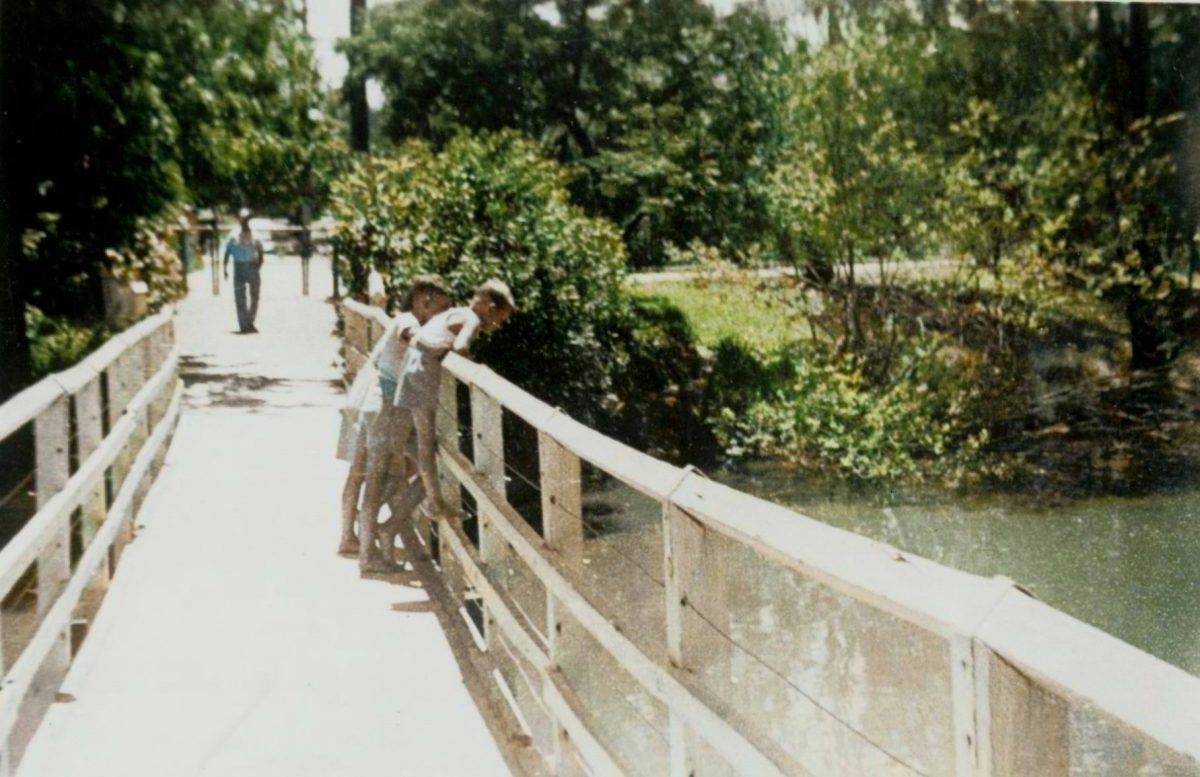
The footbridge looking towards the Victory Memorial Gardens in the 1930s or ’40s. Photo: Museum of the Riverina (coloured using Palette).
This week the Museum of the Riverina takes us back for a stroll across Wagga Wagga’s iconic Wollundry Lagoon.
The first footbridge to span the lagoon was built in 1874 by Charles Redman and joined Simmons Street to The Esplanade.
Initially, there were two plans for bridges over the lagoon, both presented to the city council by Frank Nixon in February of that year. One was for a wooden structure, and the other, a wire suspension bridge. Nixon explained at some length the advantages of the wire bridge over the timber.
As the resulting bridge was built of timber, we can only assume that the objections of some aldermen, who questioned the need for a bridge, were heeded and the council chose the more cost-efficient option. Sadly, Redman’s timber bridge had no longevity and soon perished.
By 1900, locals were again calling for the construction of a footbridge across the lagoon, not only as a convenience but a necessity, especially for the schoolchildren who lived on the ”Newtown” side of the lagoon and needed a way to attend school.
It took 20 years of lobbying, but on Monday, 10 May, 1920, a contractor named Mr R J White arrived in Wagga to construct the long-awaited footbridge across the lagoon.
The bridge would extend from Trail Street and would not only be a great convenience to pedestrians, but it would also shorten the distance to be travelled by all.
It would also mean that pedestrians no longer had to rely on using the vehicular bridges as a crossing point, which had begun to prove a dangerous feat owing to ever-increasing traffic as the 20th century progressed.
Ironbark piles that formed the bridge foundation also reached Wagga by train on 10 May. In accordance with the terms of the contract, Mr White would complete the construction in a month at a cost of £450 (about $35,000).
The last of the 24 piles of the Trail Street footbridge was driven home on Tuesday, 25 May, 1920. The average depth to which the piles had to be driven to obtain a solid foundation in the lagoon bed was 12 feet (3.6 metres) below the surface.
By mid-July, the bridge was nearly completed. The mayor and aldermen became concerned when people began using it as a short cut – riding not only bicycles but ponies down its sloping approaches at great risk to themselves! A dangerous enterprise given there were not yet handrails or lighting.
When the bridge finally opened, it became a popular spot for locals, who not only enjoyed crossing the water to go to work, school or shopping, but also whiled away the hours yabbying, fishing and feeding the ducks from above.
Sadly, as the city grew, so did the need for a vehicular bridge.
In 1962, part of the Wollundry Lagoon was reclaimed, and Ivan Jack Drive was constructed. This road, still in use today, has four lanes and was built directly beside the old footbridge, which was eventually removed.
Today, if you walk down the footpath on the Johnson Street side of Ivan Jack Drive, stop and look into the waters at the edge of the lagoon. There, like a ghostly memory of the past, you will spot the remnants of White’s picturesque bridge.
Still a beautiful spot.







